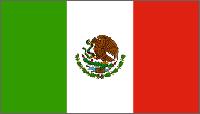XE2/WD9EWK on 26-29 May 2000

Updated 26 September 2008

If I could find "Murphy", I would kick him in the !@#^! for the equipment problems. I took with me several pieces of equipment (Icom IC-707, Kantronics KAM98, MFJ-945 mobile HF antenna tuner, in addition to VHF/UHF handhelds - Icom IC-T81A and Alinco DJ-190TD). The IC-707 had a very poor receiver, it would not even pick up the WWV broadcasts on 5 or 10 MHz. It would only pick up the strongest CW signals, plus some AM broadcast stations. I had brought some pre-assembled cables so I could connect the KAM98 to either my IC-707 or the Yaesu FT-920 HF radio at the Universidad Autonoma de Baja California (Autonomous University of Baja California, abbreviated to UABC) station in central Mexicali. That cable had more than the necessary 3 lines wired to its microphone plug (PTT, transmit audio, ground), and initially cause the FT-920 to go into a state of limbo. Later, I rewired the cable, only putting the 3 leads needed to feed transmit audio from the TNC into the radio and key the transmitter, and then the FT-920 worked fine. Unfortunately for me and my original plans, this happened on Sunday, knowing I had to leave on Monday for Arizona.
I also helped Alex XE2BSS to make his FT-920 work with his KAM Plus TNC, so he might be able to do some HF digital work, and also provide a 40m HF port for his JNOS gateway. Having a second TNC capable of HF work confirmed the radio would handle HF packet, RTTY, and Pactor just fine. Alex also had a handheld wide-band receiver, which allowed us to monitor our transmitted signals to ensure they sounded right.
Before I decided to make a cable that would work for the FT-920, I tried my hand at some SSB operation. I generally avoided CW for two reasons this weekend - I am not a good CW operator, and I did not want to violate the terms of my XE permit by operating in a contest (a restriction the Mexican authorities place on permits issued to US hams normally). On Sunday afternoon, I finally got the FT-920 to work with my KAM98, and then I focused my work that evening on digital modes (first RTTY, then a couple of Pactor QSOs). I worked 14 US states and 13 countries (includes USA) in a total of 33 QSOs:
Breakdown by mode
SSB: 18 (to EA, ES, GM, HC, JA, LU, OH,
OK, VK, W's 4, 6, 7, 8, 9)
RTTY: 12 (to SP, YV, W's 4, 5, 7, 0)
Pactor: 2 (ZL, W6)
CW: 1 (JA)
All but three of my QSOs were on 20 meters. Two were on 40 meters, one was on 15 meters. A few of my QSOs would have been nice if they happened from home (HC, ES, VK4, ZL, North Dakota - all new states or countries for me), but it is OK that they happened from Mexicali.
I went with Alex to San Luis Rio Colorado to meet several other hams, help get a TNC working for one of them, and having some good Mexican food and drink on Saturday night. I spent part of Sunday afternoon driving west into the mountains that separate Mexicali from the Pacific coast, then returned to the city to finally get the FT-920 working on RTTY and several hours of operating before going to bed, and then one final QSO on 40 meters SSB with a friend in the Phoenix area before leaving for the border, and the 4-hour drive back home.
I posted my log from this trip, that you are welcome to search for your QSOs. This is a Java applet, so your browser must allow Java applets to run in order to use it.
If you use the QSL bureaus, please send XE2/WD9EWK cards via WD9EWK (definitely NOT to the XE bureau), or you may send your QSL card for XE2/WD9EWK directly to:
Patrick STODDARD
P.O. Box 1934
Scottsdale AZ 85252-1934
U.S.A.
Please do NOT write callsigns on the outside of the envelopes. I have had problems with malcontents in the neighborhood playing with the mailbox, so I probably don't need to encourage them further by having mail in the box with something other than my name and address on it until I ever decide to get a post-office box.
This was my first time operating on HF outside the USA. Before this, I had only operated on VHF/UHF repeaters on trips to Vancouver, Canada - but never on HF. This is indeed a learning process, operating from another country. Mexico may not be the rarest of DX countries, but I still have some learning to do to better handle pileups like I saw when I was doing RTTY. I know now that I can operate RTTY from the UABC station without having to bring my own radio equipment, but I will get my HF radio repaired and test it out before taking it south again. Visiting Mexico to operate RTTY on a major CW contest weekend probably wasn't the brightest idea. I cannot operate in contests from Mexico, but there are enough weekends where I could go down there and do some radio work. And the next time won't be the first time trying this, so I have my experience from this trip to fall back on.